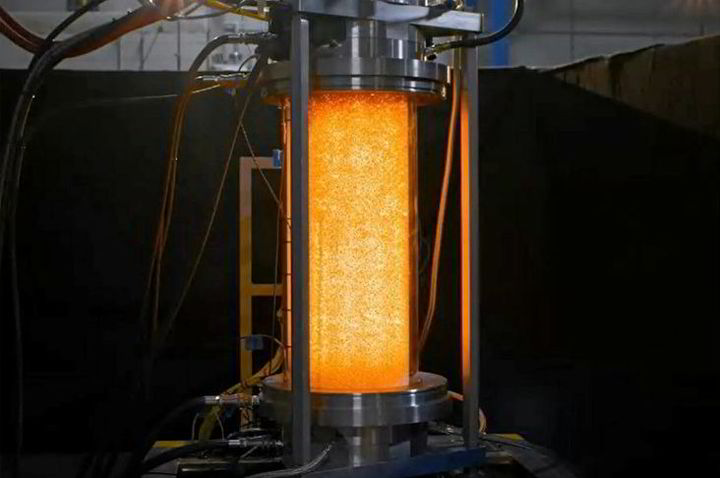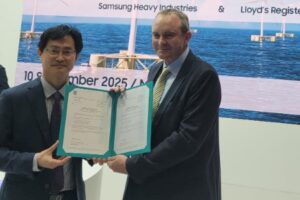Bright idea | Novel technology that uses light rather than heat to crack ammonia into hydrogen goes on sale

US start-up Syzygy Plasmonics says it has started accepting orders for “the world’s first light-powered reactor cell for industrial chemical reactions”, which can crack ammonia into hydrogen and nitrogen using ultra-high-performance LED bulbs and proprietary catalysts.
Today, ammonia cracking is an energy-intensive process, requiring a furnace containing a nickel catalyst to be heated to temperatures of 850-900°C. But Syzygy’s “Rigel” reactor only requires 12kWh of electricity to crack NH3 into 1kg of H2 — potentially reducing the cost of converting imported green ammonia back into green hydrogen, while entirely eliminating NOx emissions.
Almost all green hydrogen export projects aim to ship ammonia rather than H2, as NH3 contains more hydrogen by volume than liquefied H2 and is technically far easier to transport (presuming that the highly toxic molecule is safely contained).
But if the end user wants hydrogen, rather than ammonia, it will need to be cracked back into H2 at great cost.
The system works primarily due to a reaction between the catalyst and “plasmonic nanoparticles” (a fine powder) that are also introduced into the reactor, which kickstarts the cracking process. “Plasmonic” refers to certain metallic materials whose electrons get excited when hit with light.
The Rigel cell has now completed 1,500 hours of testing, producing 200kg of hydrogen per day from ammonia, and the company plans to improve its efficiency to just 10kWh/kgH2 by the end of 2026.
Article continues below the advert
“The testing at our Houston facility is going exceptionally well,” said Syzygy CEO Trevor Best. “We’re ready to deliver five-tonnes-of-hydrogen-per-day projects today. In 2025 we’ll be ready for ten-tonne installations, and then for 100-tonne projects in late 2026.
Despite its unusual lack of conventional vowels, the word “syzygy” (pronounced “sizz-uh-jee”) is actually English in origin, meaning a roughly straight-line configuration of three or more celestial bodies, such as the earth, sun and moon.
CEO Best previously told Hydrogen Insight: “For us, it means three things that are shaping the future — so energy, technology and sustainability. Where those three things line up, you get syzygy — that’s kind of the DNA of who we are.”






